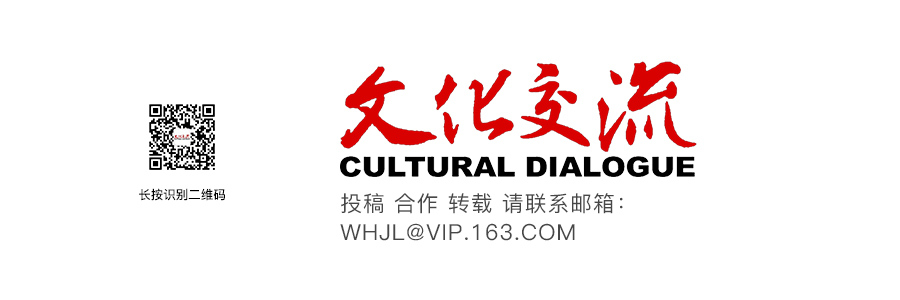转眼间,西湖申遗成功已经八周年了。
西湖申遗成功,对杭州人来说,就像从小珍爱的家藏宝贝突然被全世界发现和认同,因为这种发现和认同,这个宝贝可以得到更好的保护,更有可能永久地、安全地一代代传承下去。
西湖申遗成功,也开启了西湖保护的新阶段。八年里,为了让更多人读懂东方文化名湖之美,让遗产完整地世代传承,西湖的管理和保护者一直在不懈努力。
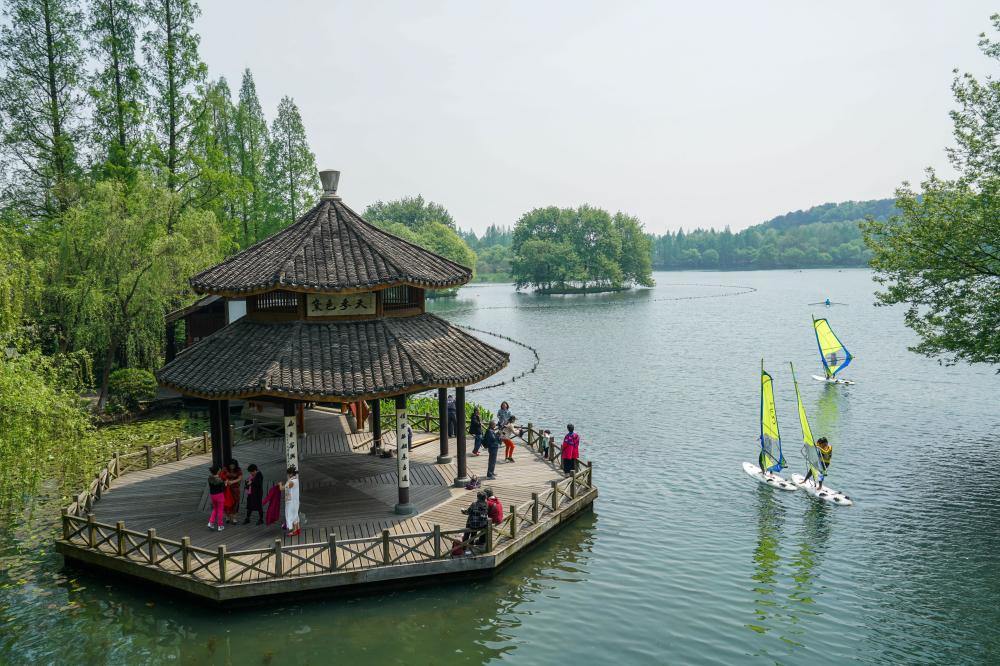
八年后的现在,当我们站在断桥上看西湖,它仍是八年前甚至千年前的那个西湖,但它却又不再是那个西湖。
申遗成功八年后,我们见证的是一个更美好的西湖。
保护西湖 是永恒主题
西湖申遗成功,也意味着西湖进入了“后申遗时代”。
申遗的目的是为了保护西湖、造福后代,让西湖再活一个2000年。保护西湖,是西湖的永恒主题,也是“后申遗时代”的第一位工作。
在西湖申遗成功后的2011年7月13日,杭州西湖世界文化遗产监测管理中心揭牌,杨小茹从那时候开始担任西湖遗产监管中心主任。
西湖的保护管理工作被业内称为“优等生”,这八年来,杨小茹和同事们一起,参与了西湖保护管理工作。
“还湖于民”目标不改变、门票不涨价、博物馆不收费、土地不出让、文物不破坏、公共资源不占用,当年申遗的“六不”承诺,这八年来,西湖的保护和管理者们,一直在坚守。
为了高标准保护世界遗产,杭州开启了多个“第一”——出台了《杭州西湖文化景观保护管理条例》,填补国内文化景观专项立法空白;编制《西湖风景名胜区业态提升规划》,这是国内首个规范景区业态的文本;成立杭州西湖世界文化遗产监测管理中心,这在全国是组建速度最快的。
在西湖景区内的建设项目,必须要经过景区规划建设局和遗产监测管理中心论证。至今,共有40多项建设项目依法进行了西湖文化景观影响评估。
“保护第一、应保尽保”,除了有完备的法律法规作保障,西湖的保护工作还需要利用现代科技,更好更全面地监测。
西湖申遗成功后的第一年,西湖遗产监管中心就建立了全面、系统、多层级的遗产保护评估和预警监测体系。
西湖有一个强大的西湖文化景观遗产区视频监控指挥系统。这个智能化指挥平台集动态视频监控系统、气象因素监测系统、防汛抗灾系统、交通视频监控系统等七大功能于一身,可以对西湖文化景观遗产区进行全方位、可操控式的监控。指挥中心还和遗产区内的43个现场分控室、19个现场管理机构实现网络联动,实现动态管理。
西湖还有游客量监测管理系统,应用了先进的红外热成像感应技术,对游客量进行科学管理。在白堤、柳浪闻莺等地,都有红外热感监测设备,一旦游客激增,系统就会预警。
遗产本体保护上也用上了高科技。
西湖景区里的六和塔的身上安装了监测设备,包括133个感应器和65个棱镜,能够捕捉到古塔细致入微的变化,并以此“对症下药”,让古塔延年益寿。每年,六和塔都会有一份“年度体检报告”。高科技的监测,能全面了解古塔身体状况,是科学保护的重要手段。
同样,保俶塔也采用了科技手段进行了全方位的监测工作,采用三维数据扫描,掌握第一手的保护状况。
西湖变美 就在细微处
里尔,摄影圈里著名的“断桥摄手”,拍断桥、拍西湖已经十年。
里尔的相机,记录了“后申遗时代”,西湖这个活态遗产不断演进的样子。
断桥与白堤的连接处,镜头朝向对面湖滨的湖畔居,这是里尔的“摄影基地”。
每天午后,他都会在这个老地方记录西湖的天空。电脑里的2000多张西湖天空的照片,就是西湖空气质量的一份“大数据”。
他拍西湖的四季流转,拍三面云山一面城,拍断桥的人流、景区的游客。
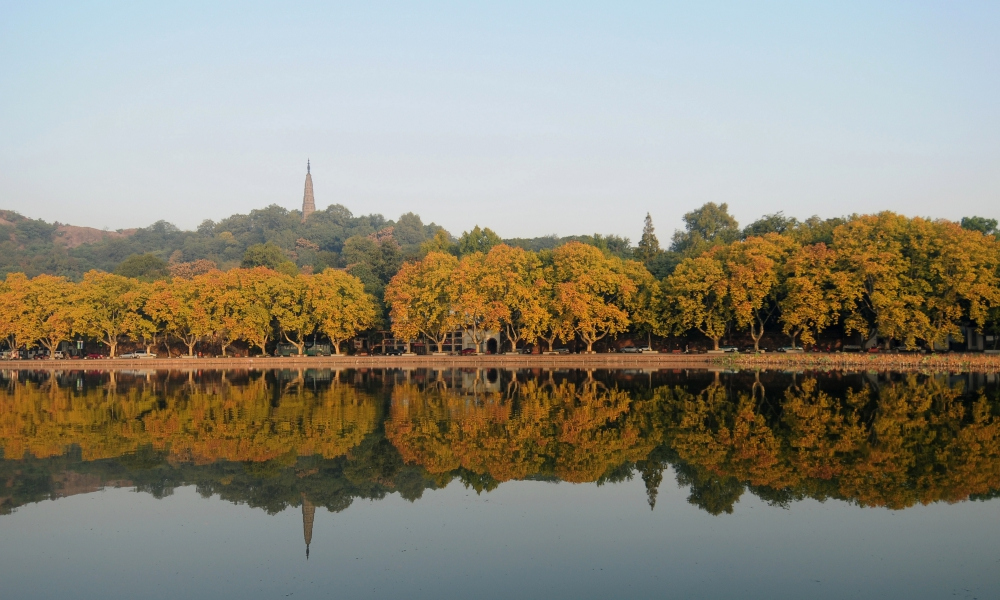
西湖的天际线已经有了变化。香格里拉的东楼,去年底降了两层,这是兑现西湖申遗时的承诺。现在,站在断桥上,不管从哪个方向观察,西湖的天际线都那么好看。
“毕竟西湖六月中,风光不与四时同。接天莲叶无穷碧,映日荷花别样红。”现在走到西湖边,看到碧波万顷,不由得会吟起这首诗。八年里,西湖的水质也在不断提升,平均水深已增加到2.5米,水质透明度由十多年前的40厘米提升到80厘米以上。
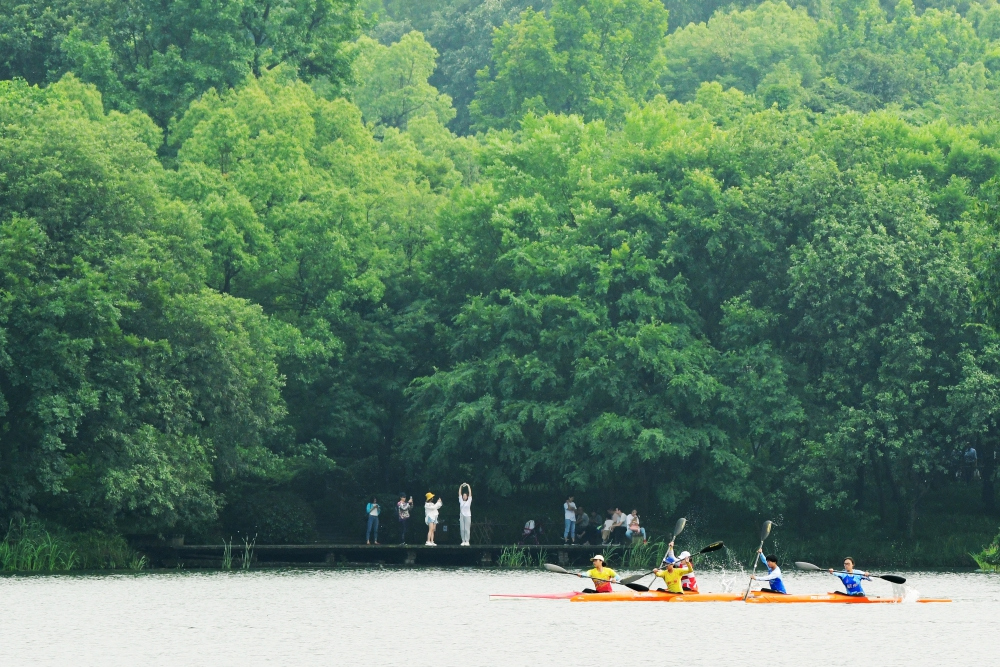
正是荷花盛开时,孤山周边的湖区已成鸳鸯们嬉戏玩耍的“鸳鸯湖”。这几年,西湖的生态越来越好,来西湖定居的鸟儿也越来越多。每年,西湖都有鸳鸯宝宝诞生,给这座城市很多惊喜。在西湖,有最小最萌也最有爱的桥——水域管理处的队员们为鸳鸯宝宝需要翻荷花拦网搭起的爱心桥,还有近五百位小鸳鸯护卫队的志愿者悉心守护着鸳鸯宝宝。
西湖眼见着一年年地变美,这变化就在一点一滴的细微处。2016年,G20峰会在杭州召开,西湖更精致大气,也更有国际范儿。
我们的西湖 也是世界的湖
西湖是全开放并拥有大量原住民的共生型遗产地,保护的难度很大。
2010年10月~2011年2月,中国建筑设计研究院建筑历史研究所在杭州市政府批准的《规划纲要》基础上完成了《杭州西湖文化景观保护管理规划(2008-2020)》的编制,进一步明确了湖东城市建设控制的地块要求和控制目标;明确了西湖景观环境整治的重点项目,以及对遗产区游客容量的控制标准和交通调整的规划要求。
2011年5月,规划成果通过国家文物局审核,由杭州市政府颁布实施,为西湖景观的保护管理提供了法规层面和技术层面的保障。
保护西湖,不仅需要管理者的努力,更离不开原住民、市民和游客的支持。
西湖申遗成功后,景区老居民的生活这些年也有了很大的变化。“景中村”的综合保护和整治,这些年一直在进行中,原来景色好生活设施差的“景中村”已换了新颜。这些西湖景区的原住民,本身就是西湖文化景观的构成要素,他们与管理者和谐相处,并共同担负遗产保护的责任。
西湖民宿经营者刘晓明是新杭州人,也是西湖遗产地利益相关者。
“2010年申遗前,景区内只有41家小型住宿业,而去年底,已经有427家,西湖民宿接待游客量也在逐年上升,去年西湖景区内的民宿就接待游客183万人次。”刘晓明回忆起在西湖开民宿的这些年非常感慨,他说,自己和民宿同行都是西湖申遗后的受益者,而同时,他也在工作中爱上西湖,关注西湖的保护,并传播西湖的文化。
对很多游客来说,西湖景区是个特别的地方,它是中国第一个也是唯一一个不收门票的5A级风景区。2002年,西湖十年综保工程大幕开启,少儿公园、老年公园、长桥公园、柳浪闻莺4座公园围栏拆除,西湖免票开放,真正“还湖于民”。免费的西湖,却给杭州带来了意外的收益。
“后申遗时代”的西湖,依然免门票,热度却在一年年增长。这几年的假期,西湖屡屡位列全国最热的景区首位。根据统计数据:2018年,西湖全年迎客约2813.9万人次;2018年,杭州共接待境内外游客18403.35万人次,实现旅游总收入3598.12亿元。
这些年,越来越多的市民重视世遗的保护,在整个西湖景区,有超过一万名志愿者为来自五湖四海的游客送去微笑和温暖。还有很多市民每天自发地在西湖边做好事,用自己的方式守护西湖。他们,是让西湖更美更好的强大力量。
西湖的保护工作仍将继续,而一些惊喜也会出现。
“后申遗时代”已走了八年,未来,西湖还会做哪些事?
比如,5G网络会进驻西湖景区,未来,西湖景区的数字化水平会更高,在这里游览的体验会更棒,也更有智慧,更具未来感。
Better West Lake on World Heritage List
The West Lake Cultural Landscape of Hangzhou was inscribed onto the UNESCO’s World Heritage List on June 24, 2011 Beijing Time. The people in Hangzhou were thrilled to learn about the inscription. The inscription marked the beginning of a safeguarding project that has been going on since 2011. Today, the West Lake looks definitely better than it was eight years ago.
The public understanding of the World Heritage status is a prerequisite to safeguard the lake which will bring benefits to the future. The safeguarding is the eternal theme of the West Lake and the top priority of the post-inscription era.
On July 13, 2011, that is, about three weeks of the inscription, the Monitoring Center for West Lake World Heritage Site was unveiled.
In the application for the World Heritage inscription, Hangzhou made six promises: the city would maintain the objective of returning the lake to the people and ticket prices would remain unchanged, museums would remain free for the public; the city would sell no land in the zone for any development, protect cultural relics against any possible damage, and allow no encroaching on public resources. The promises have been sedulously kept over the past eight years.
Shortly after the inscription, the city issued a series of rules for safeguarding the West Lake Cultural Landscape and providing a planning guideline for the West Lake zone. These rules and policies are the first of their kind in the country. And protective and improving measures are stricter than those of the UNESCO.
Since then, all the construction projects inside the zone, which amount to 40 plus, have been screened strictly in compliance with the protection system in place. The general protection policy is “protection first and all that must be protected are put into the safety net”. In addition to the policies, the center applies high-tech equipment to the overall monitoring of the heritage site. Within the first year of the inscription, the monitoring center installed a comprehensive and multiple-layer monitoring and alerting system for evaluating and safeguarding all the cultural relics within the zone.
The lake zone is covered by a video monitoring and command system. The smart system includes subsystems that respectively monitor weather and climate changes, flood prevention, traffic situation. The system provides an all-inclusive, real time, adjustable monitoring. The command center coordinates 43 sub-centers and 19 on-the-spot administration offices within the heritage zone for an overall and real time operation.
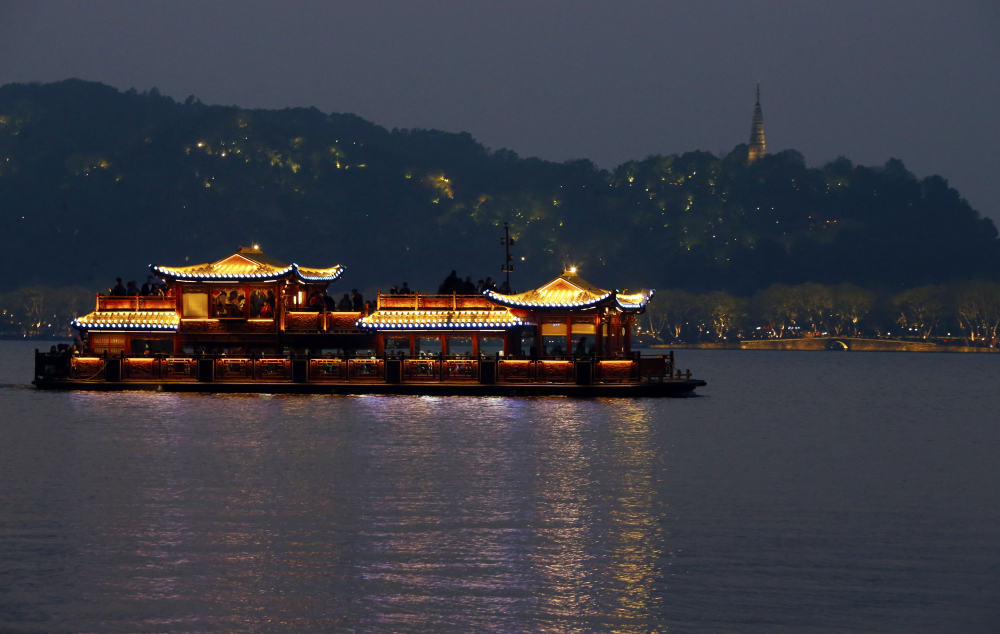
Moreover, the West Lake heritage zone is covered a system that monitors visitor traffic volumes. If visitors surge, the system alerts the management.
Landmarks in the heritage zone are also carefully protected and monitored. Take the Six-Harmony Pagoda for example. Installed on the 1,000-year pagoda are 133 sensors and 65 prisms that detect any tiny changes in the structure. An annual “health check” is conducted to make sure the pagoda is sound and solid. The Baochu Pagoda on the West Lake is also under the similar surveillance.
Photographer Li’er has been photographing the lake systematically on a daily basis over the past ten plus years. One of the regular places where he takes daily shots is at the Broken Bridge, a scenic highlight of the lake. He photos the sky at the spot every afternoon. An archive he has built up contains thousands of photos of the sky above the West Lake. These photos show that the sky has become much clearer since 2016.
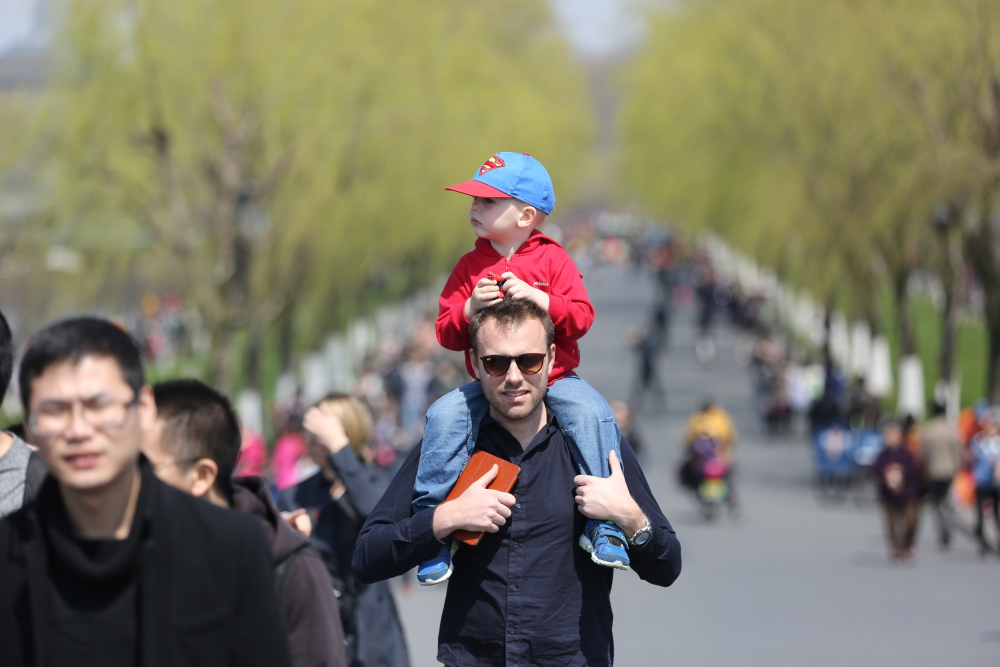
His photos also indicate that the skyline of the West Lake looks much better now. The top two floors of the East Wing of Shangri-La Hotel were removed in 2018. The removal was a promise the city government made before the inscription. The lake is now 2.5 meters deep averagely and the water transparency is now more than 80 centimeters, much better than the 40 centimeters 10 years ago. More birds consider the lake as home. The bird community has increased notably. Mandarin ducks, for example, are now a phenomenon on the lake. Some mandarin ducks have settled down on the lake. Every year baby mandarin ducks are born here. Nearly 500 volunteers do their best to keep these mandarin ducks safe. The West Lake management built special bridges for these young ducks to climb over the protection nets that protect lotus flowers.
Even before the West Lake’s inclusion onto the World Heritage List, the city government had formulated and issued some policy measures to promote the protection of the West Lake and handle all the relevant issues. In February 2011, a general plan for safeguarding and managing the West Lake Cultural Landscape of Hangzhou was formulated on the basis the planning guidelines approved by the city government. In May 2011, the general plan became effective after the examination and approval of the central government.
The safeguarding of the West Lake requires the coordinated efforts of the government, tourists, and local residents including those living within the heritage zone.
Thanks to improvement and improvement projects, villages and other communities within the heritage zone now look much better. Residents take it upon themselves to look after the heritage zone, for they know a better West Lake benefit them all.
Liu Xiaoming operates a B&B within the heritage zone. Before 2010, that is, before the inscription, there were only 41 B&B operations within the West Lake zone. By the end of 2018, there were 427. Tourists who patronized the B&B increased dramatically. In 2018, the B&B within the West Lake heritage zone received 1.83 million visitors. Liu says that he and his fellow B&B operators have benefited from the heritage status. That is why he is willing to do his bit to preserve the West Lake and engage in promotion of the West Lake.

For a large number of visitors, the West Lake is unique. It is China’s first and only AAAAA scenic zone that doesn’t charge entrance fees. The year 2002 saw the first series of comprehensive preservation project kick off. Four lakeside parks had their walls removed and offered free entrance to the public. And the West Lake stopped charging entrance tickets. Spurred by the no-ticket policy, tourism has boomed. The West Lake has remained the top attraction in the country during national holidays. Data show that the year 2018 saw over 28 million people visited the West Lake while the city received 184 million visitors and that the tourism revenue in 2018 topped 350 billion yuan.
Local residents take active part in making the West Lake better. More than 10,000 volunteers work around the lake zone to make sure tourists have a nice sightseeing experience. Many local residents engage in their own pet projects to safeguard the West Lake and make it better.
Better technologies will be introduced to enhance the safeguarding system that covers the West Lake. Take 5G for example. A 5G network will soon be installed to ensure visitors get better digital experience no their mobile phones.
